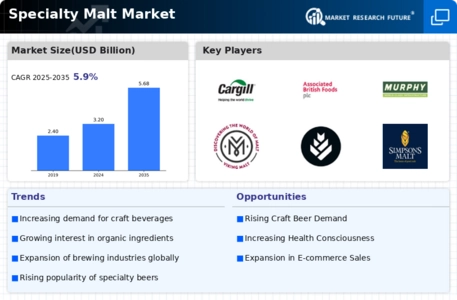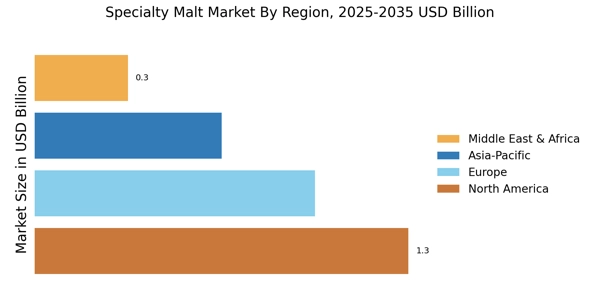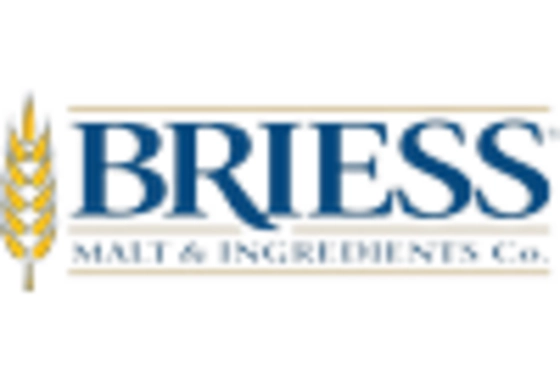Craft Beer Popularity
The rising popularity of craft beer has emerged as a pivotal driver for the Specialty Malt Market. As consumers increasingly seek unique flavors and artisanal products, craft breweries are turning to specialty malts to differentiate their offerings. In 2025, the craft beer segment is projected to account for a substantial share of the overall beer market, with specialty malts playing a crucial role in flavor development. This trend indicates a growing demand for diverse malt profiles, which enhances the appeal of craft beers. Consequently, the Specialty Malt Market is likely to experience significant growth as breweries invest in high-quality malts to meet consumer preferences.
Expansion of Craft Distilling
The expansion of craft distilling is emerging as a notable driver for the Specialty Malt Market. As the craft spirits sector continues to grow, distillers are increasingly utilizing specialty malts to create unique flavor profiles in their products. This trend is particularly evident in the production of craft whiskies and gins, where specialty malts contribute to the overall character and complexity of the spirits. The craft distilling market is projected to witness robust growth in the coming years, which may lead to increased demand for specialty malts. Consequently, the Specialty Malt Market is likely to experience a positive impact from this burgeoning segment.
Innovations in Malt Production
Innovations in malt production techniques are significantly influencing the Specialty Malt Market. Advances in malting technology, such as precision malting and improved drying processes, have enabled maltsters to produce a wider variety of specialty malts with enhanced flavor profiles. These innovations not only improve efficiency but also allow for greater customization to meet the specific needs of brewers. As a result, the market for specialty malts is expected to expand, with an increasing number of maltsters adopting these advanced techniques. This trend suggests that the Specialty Malt Market will continue to evolve, driven by the demand for high-quality, innovative malt products.
Sustainability Trends in Brewing
Sustainability trends in brewing are becoming increasingly influential in the Specialty Malt Market. As environmental concerns gain prominence, many breweries are adopting sustainable practices, including sourcing malts from environmentally responsible suppliers. This shift towards sustainability is prompting maltsters to implement eco-friendly production methods, which may enhance the appeal of specialty malts among environmentally conscious consumers. In 2025, the emphasis on sustainability is expected to drive demand for specialty malts that align with these values. This trend suggests that the Specialty Malt Market will continue to evolve, reflecting the growing importance of sustainability in the brewing sector.
Consumer Preference for Quality Ingredients
The growing consumer preference for quality ingredients is a significant driver for the Specialty Malt Market. As consumers become more discerning about their food and beverage choices, there is a marked shift towards products made with premium ingredients. Specialty malts, known for their unique flavors and characteristics, are increasingly sought after by brewers aiming to create distinctive beverages. In 2025, the demand for specialty malts is expected to rise as more breweries emphasize quality and authenticity in their products. This trend indicates that the Specialty Malt Market will likely benefit from the increasing focus on ingredient quality, leading to enhanced market opportunities.

















